Scalp Acupuncture
What is Scalp Acupuncture?
The effects of scalp acupuncture, as the name suggests, involve inserting needles into the scalp for treatment. For more information on acupuncture treatment, please see the link below.
The human body functions through electrical signals from the brain. The cerebral cortex, in particular, contains numerous areas known as “functional localizations” that correspond to various bodily functions. By inserting acupuncture needles into the scalp, which is close to the cerebral cortex, weak electrical stimuli can be transmitted through the skin to the spinal cord, working on the corresponding motor, sensory, and functional areas of the body.

Acupuncture is known to enhance “immune function” and “natural healing power.” Additionally, scalp acupuncture can further activate brain nerve cells, promoting the normal secretion of brain hormones such as dopamine, serotonin, endorphins, and growth hormones.
Scalp acupuncture has been shown to improve symptoms that conventional acupuncture treatment could not fully address. Research also indicates that it significantly increases the treatment success rate for central nervous system disorders such as post-stroke sequelae, Parkinson’s syndrome, chorea, dwarfism, and post-traumatic brain injury conditions.
Scalp Acupuncture and Gray Hair
Among the conditions that scalp acupuncture can improve, this section focuses on its effects on gray hair. As previously mentioned, scalp acupuncture is expected to activate brain nerve cells and promote the normal secretion of brain hormones (dopamine, serotonin, endorphins, growth hormones). Since stress is one of the causes of gray hair, scalp acupuncture is considered effective in managing stress levels through brain control while improving blood circulation and enhancing the nutrient supply to stem cells, thereby promoting healthy hair and preventing or reversing gray hair.
The Mechanism of Gray Hair
Newly formed hair is colorless because it lacks melanin pigment. As it grows, melanin pigment is incorporated, giving it color. Melanin is produced by cells called melanocytes. However, if melanocytes are damaged or essential hormones fail to act, melanin production ceases.
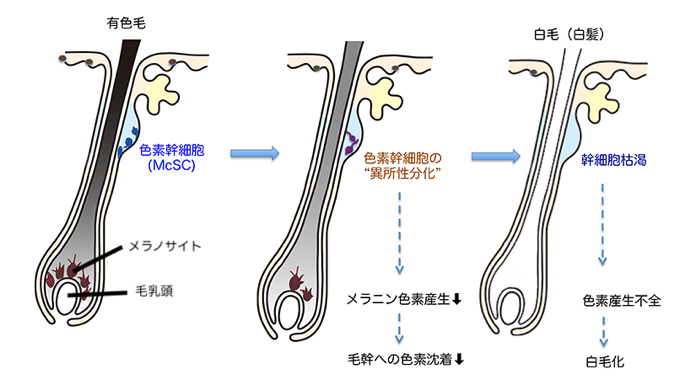
The most significant cause of gray hair is aging, but other factors such as stress and illness are also known. Previously, it was believed that stress-induced stimuli caused the stem cells responsible for generating pigment cells to lose their function, preventing melanocyte formation and leading to gray hair. However, recent research has shown that before stem cells lose their function, the microenvironment (niche) surrounding them is damaged, preventing differentiation into melanocytes. Therefore, by restoring and maintaining the niche around pigment-producing stem cells, melanocytes can resume functioning, potentially restoring natural hair color.
Gray Hair Caused by Stress
An experiment observed changes in body hair in mice subjected to stress. The conclusion was that “stress triggers the sympathetic nervous system to release norepinephrine, which affects melanocytes.”
When norepinephrine floods the hair roots due to stress, a massive number of stem cells rapidly convert into melanocytes, producing and releasing large amounts of pigment. However, homeostasis mechanisms cause the excess pigment to be broken down. At the same time, the number of stem cells that should become melanocytes drastically decreases (since stem cells do not replenish easily), leading to the growth of pigment-less white hair.
By using scalp acupuncture to control stress levels through brain regulation, improve blood circulation, and enhance the nutrient supply to stem cells, it is possible to promote healthy hair, prevent gray hair, and even reverse it.
Flare Phenomenon in Acupuncture
The redness that appears around the insertion area during acupuncture is known as the “flare phenomenon.” Mechanical and chemical stimuli sensitize TRPV1 receptors, increasing peripheral blood flow and activating collagen within the scalp.
Because the body recognizes acupuncture needles as a “foreign object,” axon reflexes and flare reactions occur, stimulating immune responses. Pain or stiffness often correlates with poor local or related-area circulation. Acupuncture can directly work on deep muscles, improving deep blood circulation that cannot be reached through surface-level treatments.
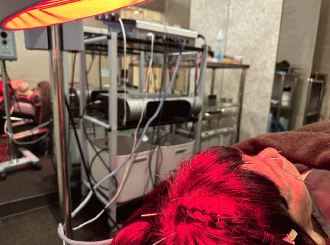
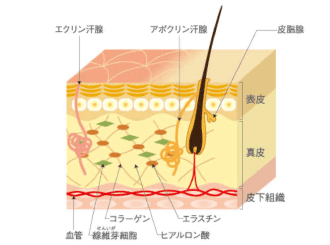
Scalp Acupuncture Techniques
Scalp acupuncture originated in China. As a result, there are many styles in China that are not well known in Japan. However, there are also techniques developed in Japan that are now used worldwide. Here, we introduce one Chinese-originated method and two famous Japanese-originated methods.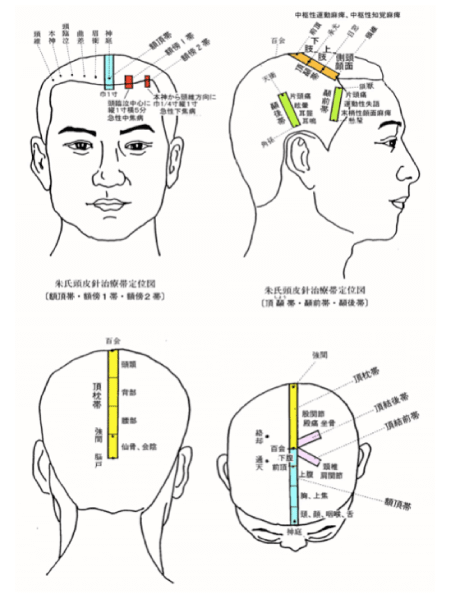

Indications for Scalp Acupuncture
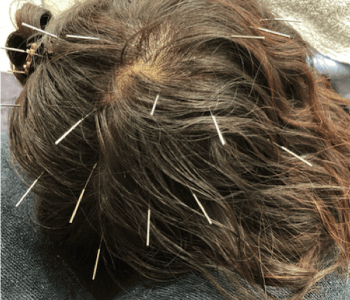 The stimulation points are adjusted according to the symptoms
The stimulation points are adjusted according to the symptoms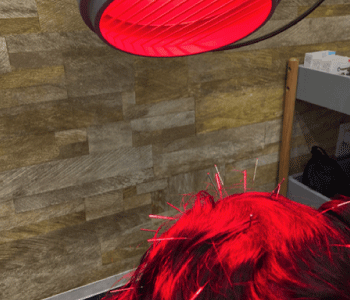 Infrared effect further promotes blood circulation improvement
Infrared effect further promotes blood circulation improvement